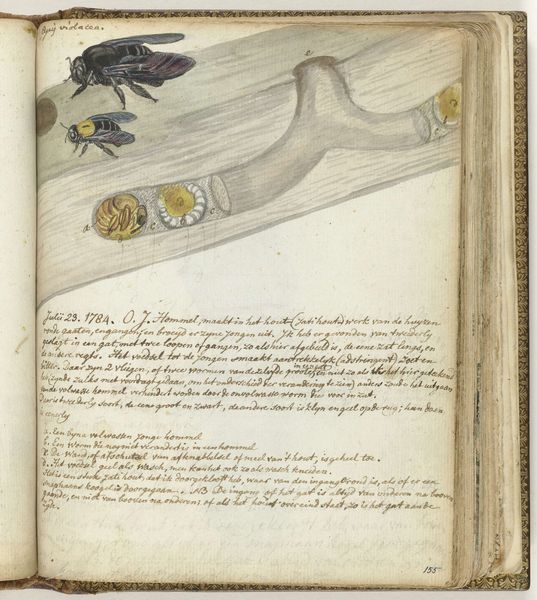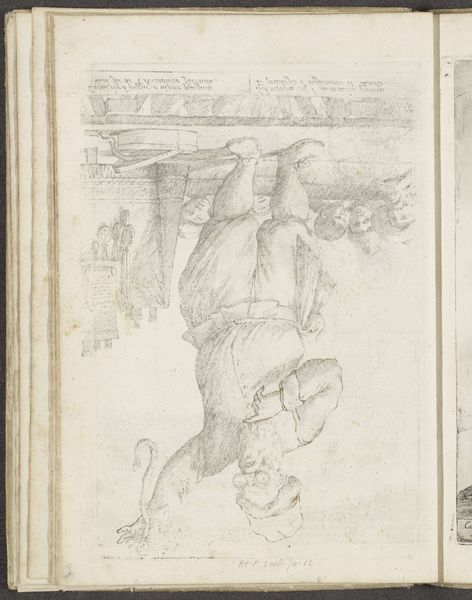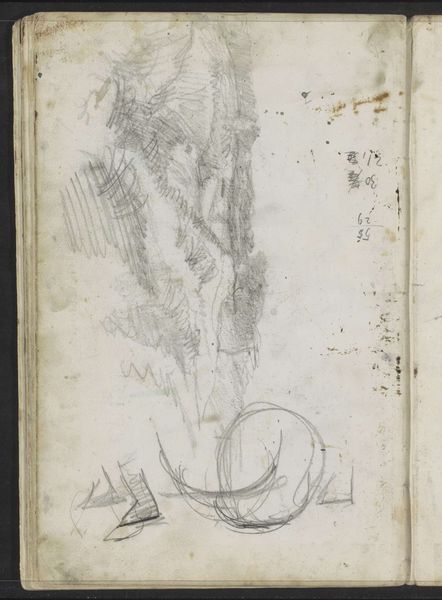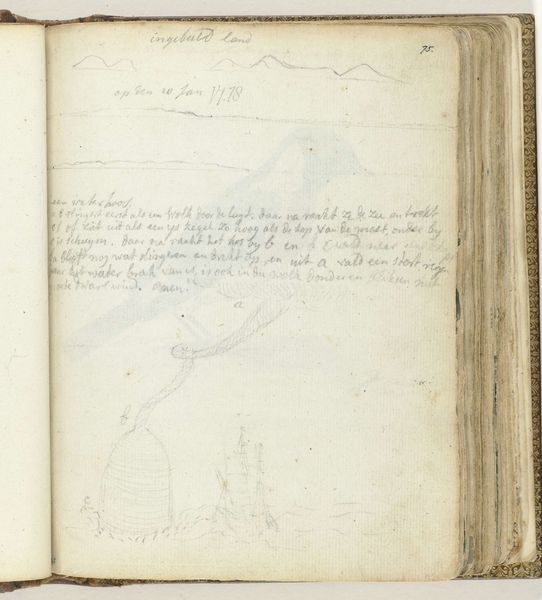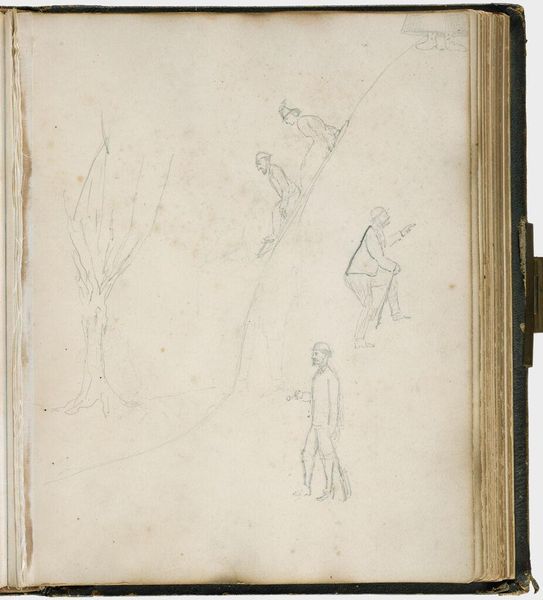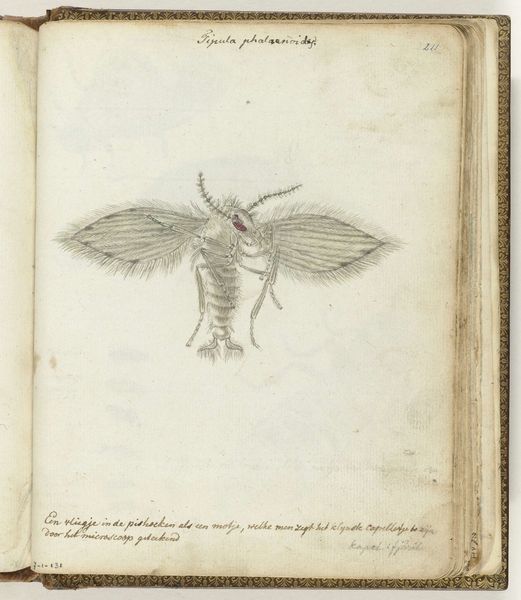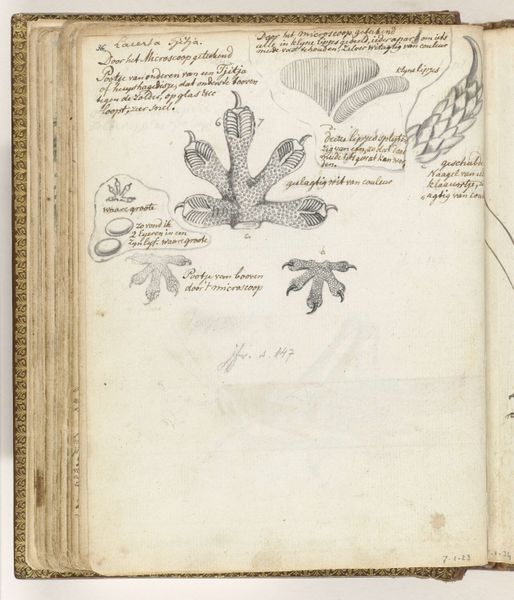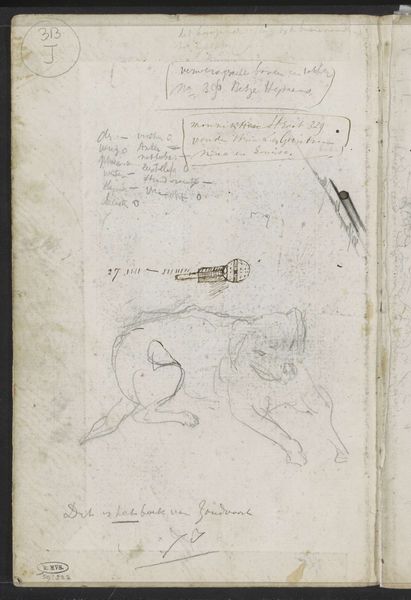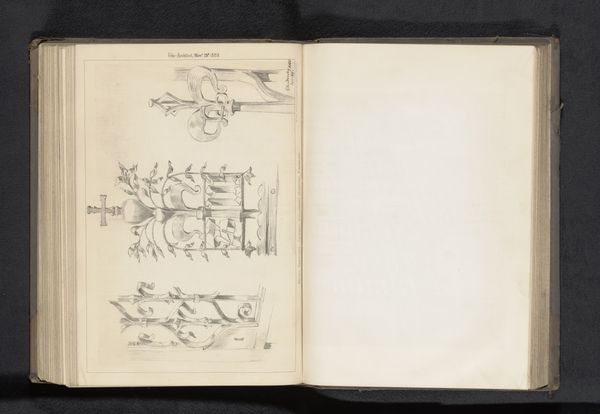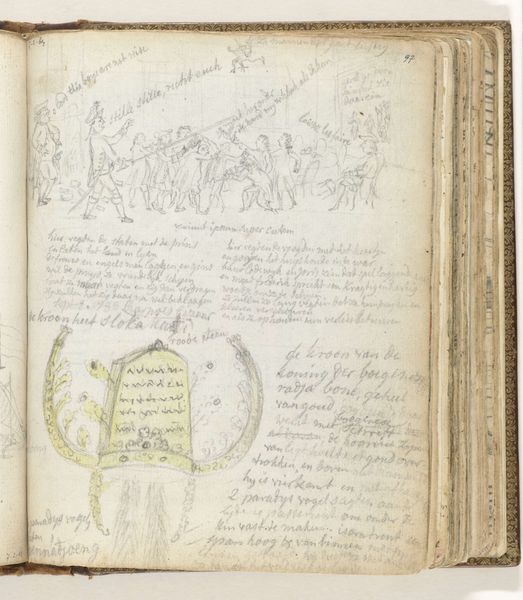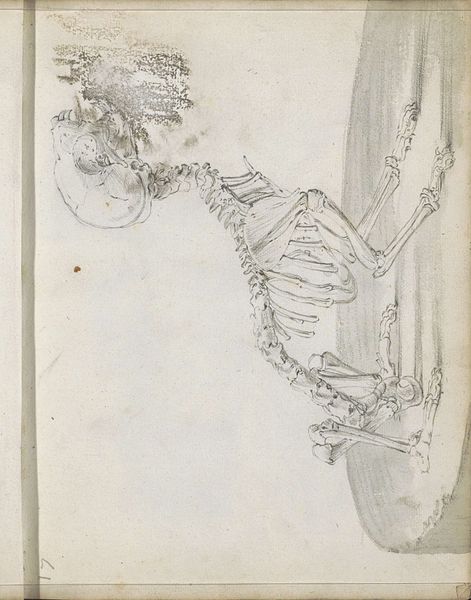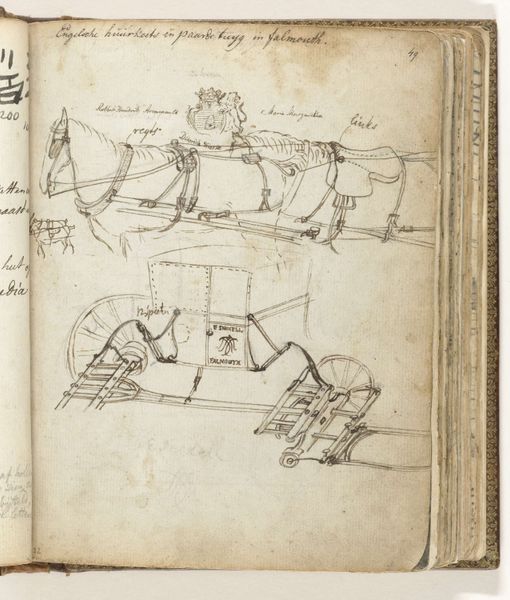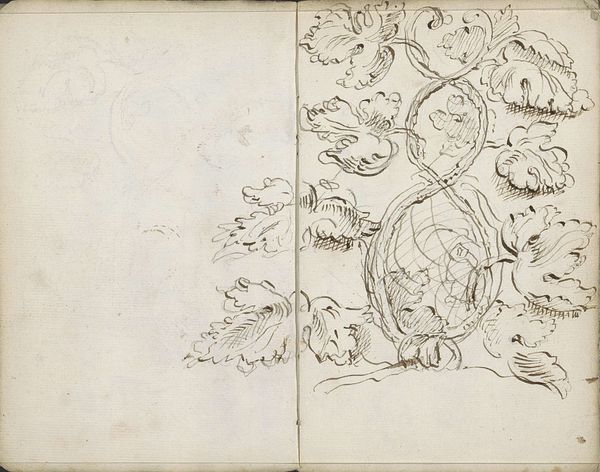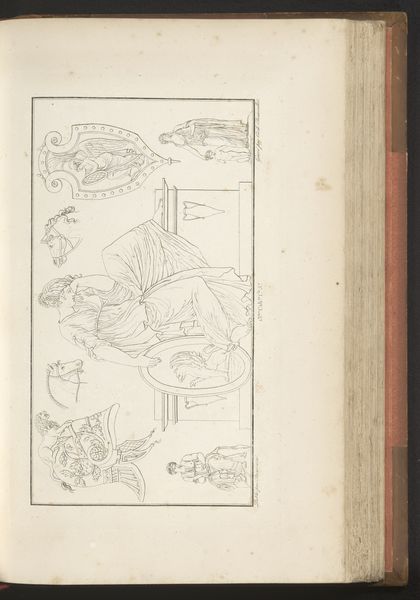
Dimensions: height 195 mm, width 155 mm
Copyright: Rijks Museum: Open Domain
Curator: This drawing, entitled "Vertelling over man en ezel. Zeevogels," possibly dating to 1778, is attributed to Jan Brandes. It combines ink, watercolor, and pencil on paper, showcasing the artist's range. Editor: The immediate impression is one of movement and light. The arrangement of the sketches, though seemingly random, creates a dynamic energy across the page, juxtaposing mundane human life against nature’s unburdened creatures. Curator: Indeed. The division of the page into distinct registers – the upper part filled with depictions of figures and the lower section teeming with birds – is interesting. Notice how the delicate pencil strokes define the human subjects while the birds have been articulated using watercolor, differentiating the symbolism associated with each through the materiality. Editor: Right. The figures on donkeys certainly evoke familiar tropes of travel and perhaps labor or even pilgrimage, all well-worn cultural pathways for expressing movement. The birds, however, those magnificent seabirds with their broad wingspans, conjure freedom, escape from earthly concerns and the confines of life. Curator: Considering that this work possibly dates to 1778, one could argue that the seemingly 'impressionistic' renderings of the birds, specifically in watercolor, anticipate later developments in landscape art, freeing the composition to reflect a sense of place instead of realistic replications. Look closely at the strokes defining the plumage—a radical departure from naturalistic renderings, pushing instead toward abstraction. Editor: This resonates deeply when viewing the work through the lens of cultural history and psychology, with the birds potentially representing a collective longing for transcendence, away from worldly responsibilities, anxieties about freedom itself—ideas always present but sharpened in the revolutionary and enlightenment eras. Brandes captures a sense of the human spirit yearning for the sublime freedom seen embodied in the birds’ effortless flight. Curator: I see the interplay you propose between cultural memory, emotional weight and the techniques Brandes’ employs here to construct binaries: burdened figure/soaring creatures, lined drawing/painterly touch. Through considered mark making, we confront layered historical symbols and their relationship. Editor: Ultimately, both the aesthetic rendering and symbolic weight speak to humanity’s perpetual dialogue with itself and the natural world, presented through Brandes’ unique lens. Curator: Precisely. These details allow us to read the artwork as a historical record that remains formally engaging even centuries later.
Comments
No comments
Be the first to comment and join the conversation on the ultimate creative platform.
